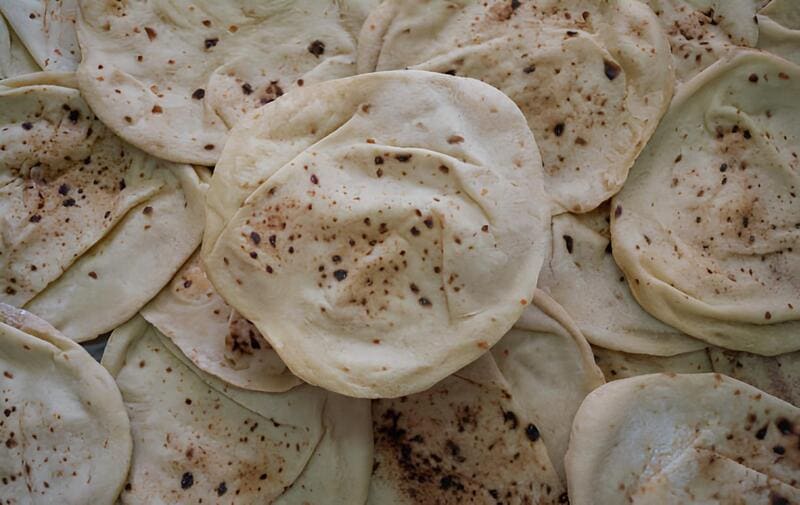
Rooted in Egypt’s ancient culinary traditions, Aish Baladi—also known as Egyptian Pita Bread or khubz—is a staple in Egyptian households. This rustic flatbread boasts a flavor profile that is both hearty and slightly nutty, thanks to its blend of whole wheat and white flours. Known for its healthy attributes, it remains a beloved daily food item.
Weathered by generations, this easy to make bread reflects Egypt’s communal spirit, often enjoyed with family meals. Traditionally baked in communal ovens or over an inverted metal dome, it results in a chewy, airy texture perfect for scooping up flavorful dips or accompanying hearty stews.
Ingredients
- 1 kg all-purpose flour (or a combination of whole wheat and white flours)
- 1 tablespoon salt
- 1 packet instant yeast (about 7 grams)
- 3 1/2 cups warm water (approximately, adjust as needed)
- Extra flour for dusting
Preparation
- In a large mixing bowl, combine the flour and salt. Mix well.
- Add the instant yeast to the flour mixture.
- Gradually pour in warm water, mixing continuously until a soft, cohesive dough forms.
- Knead the dough vigorously until it becomes smooth and elastic, about 10 minutes.
- Lightly coat the dough with flour, cover, and let it rest in a warm place until it doubles in size (about 1-2 hours).
- Preheat a skillet or griddle over medium heat.
- Divide the dough into small, equal pieces and shape them into balls.
- Roll out each ball into a thin round (approximately 1/4-inch thick).
- Place the flattened dough on the preheated skillet.
- Cook for about 2-3 minutes on each side, or until the bread puffs up and has browned spots.
- Transfer to a wire rack to cool slightly before serving.
Did you know?
Aish Baladi has been a part of Egyptian culture for thousands of years. Dating back to ancient Egypt, the name “Aish” refers to life itself, emphasizing the bread’s fundamental role in daily existence.
In contrast to more modern pitas, traditional Egyptian flatbread is predominantly whole wheat, adding to its healthy appeal. This bread is also incredibly versatile: not only is it a vehicle for scooping stews and dips, but it can also be used to make sandwiches or simply enjoyed with a drizzle of olive oil and a sprinkle of za’atar.
Moreover, baking flatbread at home is an environmentally friendly practice since it can be cooked over a simple stove or griddle, eliminating the need for an oven. Whether you’re a novice or an experienced baker, making this ancient bread can connect you to millennia of culinary history, enriching your kitchen with the flavors of Egypt.
